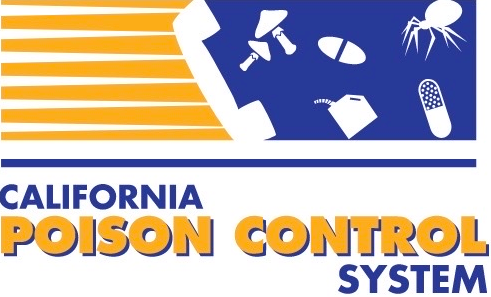Watch the Close Calls with CPCS video episode on Button Batteries (above).
About Toy and Gadget Safety
It's important for parents and caregivers to know that toy parts and gadgets can be dangerous, especially if swallowed. Poison control centers commonly receive calls about kids swallowing parts of toys and gadgets. Items like button batteries (small, coin-shaped batteries), magnets, and water beads (tiny beads that grow when wet) can have life-threatening consequences if swallowed. Learn more about these dangers and take steps to prevent accidental poisoning from toys.
Toy and Gadget Safety Risks
Button Batteries, also known as coin cell batteries, are small, round batteries commonly found in many household products. They can be found in remote controls, key fobs, hearing aids, watches, musical greeting cards, flameless candles, and children's toys. Their shiny appearance can be attractive to young children, who may put them in their mouths. When swallowed, button batteries can cause severe chemical burns to internal tissues, leading to serious injury or death. Burns can happen quickly, within 30 minutes of swallowing a button battery.
Magnets, particularly small, high-powered magnets, are often found in toy sets and magnetic building blocks. When multiple magnets are swallowed, they can attract each other across intestinal walls, leading to tissue damage, obstructions, and life-threatening infections. The danger is often magnified because symptoms can be hard to identify, which may delay diagnosis, leading to severe complications.
Water Beads, (also known as gel beads, sensory beads, or orbeez) are superabsorbent beads that expand when exposed to water. These products are sold in various sizes, often starting as tiny, hard pellets. When swallowed, particularly by young children, these beads can continue to expand inside the body, causing choking, life-threatening intestinal blockages, or other internal injuries.
For more information about toy safety please visit the following
- U.S. Consumer Product Safety Commission (CPSC)
- American Academy of Pediatrics (AAP) - Toy Safety
- Safe Kids Worldwide
Signs of Button Battery Ingestion
Symptoms can vary and may not be obvious. They can include the following
- Black and/or bloody stools
- Chest pain and/or discomfort
- Coughing and/or gagging
- Difficulty and/or painful swallowing
- Drooling and/or excessive salivation
- Fever
- Hoarse voice and/or noisy breathing
- Refusal to eat and/or drink
- Vomiting (sometimes bloody)
Seek immediate medical attention if you suspect a child has swallowed a button battery.
Signs of Magnet Ingestion
Symptoms can be vague and may mimic other common illnesses, making diagnosis difficult. They can include the following
- Abdominal pain
- Constipation or diarrhea
- Fever
- Lethargy and/or decreased activity
- Nausea and/or vomiting
Seek immediate medical attention if you suspect a child has swallowed a magnet.
Signs of Water Bead Ingestion / Obstruction
Symptoms may not appear right away, but can worsen as the bead expands. They can include the following
- Abdominal pain and/or swelling
- Choking (if the bead is inhaled or immediately blocks the airway)
- Constipation or inability to pass stool
- Dehydration
- Lethargy and/or decreased activity
- Refusal to eat and/or drink
- Vomiting (especially green or yellow bile)
Call the Poison Hotline at 1-800-222-1222 if you suspect a child has swallowed a water bead.
Toy and Gadget Safety Prevention
All toys and gadgets
- Inspect toys and gadgets regularly. Routinely check toys and gadgets for small, loose, and/or broken parts that could become choking hazards.
- Follow age recommendations. Follow guidelines on toy and gadget packaging, as these often reflect choking hazards and developmental appropriateness.
- Educate caregivers. Inform grandparents, babysitters, and other caregivers about these hidden hazards.
Button batteries
- Secure battery compartments. Ensure all products containing button batteries have screw-secured battery compartments. If not, consider discarding the product or keeping it out of reach.
- Store spare batteries safely. Keep all loose button batteries (new and used) in original, child-resistant packaging or in a locked cabinet, out of sight and reach of children.
- Dispose of batteries properly. Immediately tape both sides of used button batteries with strong tape and dispose of them in a sealed container or recycle them at a designated facility.
Magnets
- Avoid magnets for young children. Do not purchase toys with small, high-powered magnets for children under 14, as recommended by the Consumer Product Safety Commission.
- Supervise magnet play. If older children use magnet sets, ensure strict supervision and make sure they understand the dangers of ingestion. Store them securely when not under supervised use.
Water beads
- Avoid water beads for young children. Do not purchase water beads if you have children under five years old or any child who might put objects in his/her/their mouth.
- Supervise older children. If older children use water beads, ensure strict supervision and make sure they understand the dangers. Store them securely when not under supervised use.
What to do if toy or gadget parts are swallowed
- Seek medical attention right away.
- Do not induce vomiting.
- Do not give the child anything to eat or drink.
- Tell medical staff that you saw the child swallow the items, or if ingestion is suspected. An X-ray is needed right away to locate the item (button battery, magnet, water bead, etc.).
Related topics
Watch the Close Calls with CPCS video episode on Water Beads.



